Colonel (retd) Anil A Athale
The closure of 1962 conflict and demarcation/freeze on border dispute would lay the foundations for a friendly and peaceful relations between the two great countries and be a guarantee for peace in the 'Asian Century', says Colonel (retd) Anil A Athale.
India and China, two of the world's oldest surviving civilizations have had remarkably peaceful relations throughout their long history. The formidable barrier of Himalayas bordered by high Tibetan plateau and long distance from the heartland of China are the reasons that remain valid to date.
There were sporadic military expeditions by Mohammed bin Tughlaq in the 13th century and Zorawar Singh in the 19th century. Tibet itself remained in semi-independent state as and when central power in China weakened.
The border between India and Tibet, in the remote region remained undefined and inconsequential with no vital resources or population. A brief look at the history of border dispute is necessary to understand the present state of relations between the two countries.
...
War and peace: The India, China story
Image: China, India western border depicting disputed areas in this sector, including Aksai ChinThe Sino-Indian border dispute centres on the remote areas of Aksai Chin lying north of Ladakh.
The origin of Indian border being placed on the remote Kun Lun mountains goes back to the early 20th century when the British, afraid of the Russian expansion in the East and a possible Russo-Tibetan alliance, placed a wedge of Aksai Chin between Sinkiang and Tibet.
This was done with the tacit understanding of the Chinese government that was weak and saw in this move a benefit of weakening Tibet.
As the Russian threat waned, it essentially remained a border only on the map, and the truth is that neither British India nor Tibet attempted to exercise any effective control over this inhospitable region that proved to be of no strategic significance.
There the matters stayed right till 1956 when China built a highway linking its two troubled provinces of Sinkiang and Tibet, primarily to facilitate military movement.
The peculiar geography of the area is such that it is only through the area of Aksai Chin that this link is possible. The link is of obvious strategic importance for the Chinese.
War and peace: The India, China story
Image: File photo of Jawaharlal NehruThe Indian position in Ladakh was precarious as there was no road link to Leh.
Jawaharlal Nehru realised the Indian weakness and tried to downplay the issue but goaded by an uninformed media and vociferous opposition, embarked upon a 'Forward Policy' of establishing small posts with 5 to 10 men in the areas claimed by the Chinese as theirs.
These posts were militarily and logistically unviable. Under amateurish advice, India activated the border in NEFA (North East Frontier Agency) to 'divert' Chinese attention from Ladakh.
In a military sense, it is illogical to expect any effect of events in NEFA on Ladakh, the two areas are nearly a thousand miles apart. China has always laid claim to the entire NEFA (now Arunachal Pradesh) but this was bargaining ploy to get Aksai Chin in which she was interested.
As the events unfolded, inept military leadership led India into a disaster in NEFA. The Chinese were careful to synchronize their attack with the Cuban missile crisis of October 1962 and acquired enough territory to safeguard the Aksai Chin highway and that is where they stay today. Status quo on border suits the Chinese.
War and peace: The India, China story
Image: The Chushul memorialIn popular mind, the 1962 conflict evokes the memories of an unimaginable defeat. This is not strictly true. In the northern sector, on the Ladakh front, the Indian Army, despite heavy odds gave a good account of itself and Chinese gains were small.
The airfield at Chushul, a major prize, remained in Indian hands. The impression that it was an unmitigated disaster is fostered by the Indian rout at Sela. But for the Sela defeat and panic retreat, 1962 would have at worst been classed as a setback but not a disaster.
But the biggest 'mystery' of 1962 is the non-use of offensive air power by India.
The whole conflict was being run as a personal show by individual generals and there was very little co-ordination with the air force. At that time the Chinese had barely two airfields in Tibet and their fighter aircraft were decidedly inferior to the Indian British-made Hunters.
The Indian Air Force was guaranteed virtual air superiority on the battle filed. With air power on its side, India could have overcome the tactical disadvantage of lack of artillery in Ladakh and could have intercepted the foot and mule columns of the Chinese in Towang area.
But such was the irrational fear of Chinese retaliation against Indian cities that India did not use its air power.
War and peace: The India, China story
Image: File photo shows abandoned Indian Army vehicles at BomdilaAt the very basic level, the Indian Army was fighting a repeat of 1947-48 Kashmir war, a campaign against the tribal invaders. While the Chinese, veterans of Korean war, were a well-oiled military machine.
The story of 1962 can be summed up in one sentence, while the Indians were foolishly provocative, the Chinese were more calculated, efficient and therefore successful.
At a tactical level China had the advantage of operating on the Tibetan plateau while India had to cross the formidable Himalayas to reach the border.
China had a major strategic disadvantage as its bases were far and ill connected but this was obviated as large forces were already stationed in Tibet to deal with the internal situation.
Impact of 1962 conflict on the Indian psyche
November 20, 1962 was the darkest day in the history of Independent India. The previous evening, a distraught Nehru addressed the nation.
"Huge Chinese armies are marching into the north-east of India. Yesterday we lost Bomdila, a small town in Kameng division my heart goes to the people of Assam!"
War and peace: The India, China story
The whole nation was stunned by the reverses on the battlefront. Rightly or wrongly from military point of view at least, people perceived that the very existence of India was at stake.
But in these otherwise dark winter days, there was a silver lining. As if in a flash all-internal bickering and fights ceased. On October 23, the guard at Teen Murti House, the prime minister's official residence, was confronted by an elderly couple, obviously from rural area around Delhi.
When they demanded to see the PM, the sentry directed them to his officer, thinking that they must have come with some petition.
The officer was stunned into silence when the old man took out the papers donating his land for the defence of the nation. Women gave their jewellery including even the 'mangalsutra' to the National Defence Fund to buy guns to fight the Chinese.
In Rajasthan, 250 families from village Bardhana Khurd, decided to send one son from each family into the army. All over the country people queued up to join the defence forces.
Trade unions all over India gave up their right to strike till the national emergency lasted. The donations in cash were more than $220 million, the total amount needed in the supplementary budget.
War and peace: The India, China story
Image: Nehru with the Dalai LamaReflections on the 1962 border conflict
The 1962 India-China border conflict is a classic case of misunderstandings, lack of effective communication and mutual mistrust.
In the initial stages, when the Chinese Aksai Chin highway was discovered, Nehru tried to play down the issue by stating in Parliament that Aksai Chin was a useless area where 'not a blade of grass grows'.
But soon the issue was seized by the opposition parties and Nehru was forced to take a stand. While the border tension was increasing, the situation in Tibet worsened and the Dalai Lama fled to India.
Given the ancient cultural linkages between Tibet and India and also Indian tradition of never refusing an asylum, Dalai Lama and his followers were given a refuge in India.
China escalated the border dispute by claiming the entire NEFA area and repudiated the MacMohan line.
War and peace: The India, China story
To silence his domestic critics Nehru embarked on the legalistic 'Forward Policy', a form of political brinkmanship without the backing of military force.
Given the Indian relations with Soviet Union and the US, he felt confident that 'there will be no open war with China'.
The Chinese mistook Nehru's move as some sort of 'grand design' by India to interfere in Tibet and Sinkiang. When Cuban Missile Crisis of October 1962 engaged the attention of the US and the USSR, China seized the opportunity and brushed aside the posts in Aksai Chin and secured its highway.
The inept Indian operations in NEFA gifted it a victory that it possibly did not even want.
The effect in India was dramatic as the people were jolted out of euphoria of 'Hindi Chini bhai bhai' (Indian and Chinese are brothers) and there was a sense of betrayal.
For the first time after independence in 1947, Indians sensed a threat to their country. The situation was akin to what the Chinese must have felt on November 24, 1950 when General Douglas MacArthur began his offensive to go across the Yalu river.
War and peace: The India, China story
The Chinese unilateral ceasefire on November 21, 1962 and subsequent withdrawal in NEFA to the McMohan line coincided with the end of Cuban Missile crisis. In dire military straits, India requested and got massive military aid from the US and for a brief period India became a virtual US ally against China.
It is noteworthy that while fighting raged in Ladakh and NEFA areas, the central sector, opposite the Indian state of Himachal Pradesh and Uttar Pradesh as well as areas bordering Sikkim remained peaceful.
Subsequent developments
At the height of the border conflict, on November 14, 1962, the Indian Parliament passed a unanimous resolution stating that India will recover every inch of territory lost to the Chinese, 'howsoever long or hard the struggle may be!'
Post conflict, India embarked on major military modernisation and development of communications on the Himalayan border. However, despite the parliamentary resolution, in the last 43 years, India has taken no offensive action against China.
War and peace: The India, China story
China continues to occupy areas claimed by it in Aksai Chin area but not anywhere else, including the Arunachal border despite its claim to the entire state. Nor has China taken any offensive action on this claim.
While the border remained peaceful, the relations between India and China went into a deep freeze right till 1986.
First the two countries found themselves on the opposite side of the fence in an intra-Communist feud between erstwhile Soviet Union and China. Later as a tacit alliance between the US and China came into existence, India found itself firmly in the Soviet camp, more out of compulsion than choice.
The US-China front versus Indo-Soviet front also spawned policies in the Indian subcontinent that engendered nuclear and missile proliferation to the detriment of Indian security.
The border dispute as conflict over land receded and it became a political dispute between India and China with wider regional and global ramifications.
War and peace: The India, China story
India responded to this challenge by developing its own nuclear and missile capability.
The Chinese liberalised their economy in late 1980s while India began this process only in 1991. Chinese economic progress was spectacular and India has only lately begun to catch up.
Despite the political dispute, India and China began to expand bilateral trade with annual trade in excess of $30 billion.
The Cold War ended in 1992 with the collapse of Communism in Soviet Union and the end of Russian empire. It would not be an exaggeration to say that very few countries had anticipated this and the world was slow to change.
Since the demise of the Soviet Union was not anticipated, countries round the world, including China had fashioned their long-term policies on that basis.
The current state of relations between India and China does not cater to the shift in the global economic balance from Europe to Asia. It is also certain that the shift in economic balance will be followed by the changes in military balance that would then impact on the world's geo-politics.
War and peace: The India, China story
It is natural to expect that this change will be resisted though various means by the existing power/powers. If India and China could mend fences, it would be possible to face this challenge and maintain world peace, so necessary for the progress of India and China.
Looking into the future
If India and China both see mutual advantage in friendly relations in the future then the first step has to be to deal with the legacy of the border dispute.
At the popular perception level, it is necessary to have 'closure' of the memories of war. This could be achieved by both the countries expressing 'regret' for the 1962 border war that took place due to misunderstanding, misperceptions and brinkmanship.
A public declaration that both countries wish to put the past firmly behind would then set the stage for resolution of the border dispute.
The India-China border dispute has to be seen in context of the Himalayan kingdoms as well as relations of both the countries with other peripheral powers in the region. Peace on the border would only be possible if both the countries show sensitivity to each others security concerns and avoid promoting proxies to oppose each other.
In absence of this neither would have the incentive to end the border dispute as that serves as a ready excuse to directly target each other.
War and peace: The India, China story
The border itself has three district parts: Areas bordering Arunachal Pradesh. Here while the Chinese claim the areas right up to Brahmaputra River, it is not in occupation of any Indian territory. The MacMohan line that defines the border and runs along the watershed has been accepted by China in case of Myanmar.
The central sector that includes areas bordering Sikkim, Uttar Pradesh and Himachal Pradesh.
In these areas as well there is no major dispute about the border alignment and Chinese also do not lay claim to any areas. There is however a dispute regarding the status of Sikkim.
Aksai Chin area: Here the Chinese are in occupation of sizable areas that India claims as its own. However the Chinese are satisfied with the areas that they control as that serves their strategic need for a road link between Sinkiang and Tibet.
As the dispute over Aksai Chin area may encounter legal hurdles on Indian side, it could well be 'frozen' for next 100 years and Actual Ground Position Line (AGPL) jointly demarcated and accepted by both sides.
War and peace: The India, China story
Image: Indian Army officers with their Chinese counterpart at Nathu LaPhotographs: Courtesy Ajai Shukla
The border in central sector and in Arunachal could be dealt with separately and jointly accepted by both sides as the international border. To avoid unnecessary confrontation (like the one at Sumrodongchu in 1986/87) both sides could agree for demilitarisation and also permit each other's nationals, specially graziers limited access.
The essential principle is that finalisation of border in other areas should be de-linked from the dispute over Aksai Chin.
The closure of 1962 conflict and demarcation/freeze on border dispute would lay the foundations for a friendly and peaceful relations between the two great countries of India and China and be a guarantee for peace in the 'Asian Century'.
Notes:
This paper is based purely on published information and views expressed are that of the author and not of any organisation or government.
References:
Brecher Michael, India and the World Politics: Krishna Menon's View of the World, Oxford University Press, Toronto, Bombay, 1968
White Paper Vol VIII, Govt of India.
Personal Papers of Roger Hilsman Box 1-Sino-Indian Border Clash, 1962, 1963, Chinese Cease Fire Proposal, Sino-Indian Border Clash, 1962, Chronology, 1962, Implications Analysis, Kennedy Library, Boston, USA.
Official History of 1962 Sino Indian Border Conflict' History division, Govt of India. under publication.
Visit to the border areas, 1987-1989 and personal interviews with the participants.
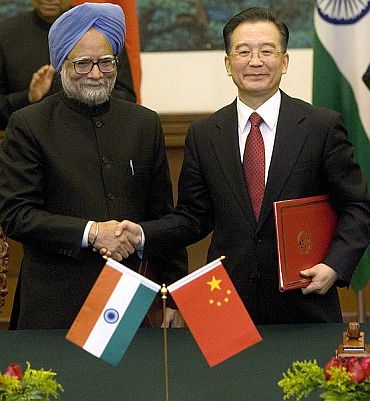



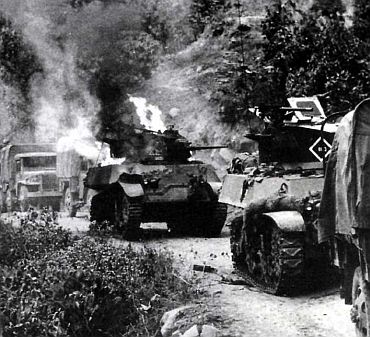
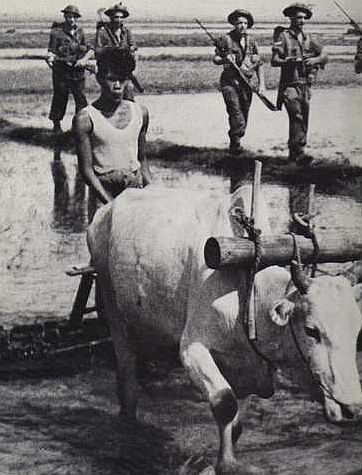
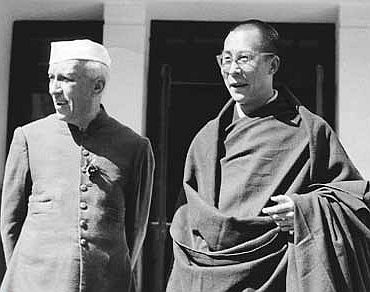
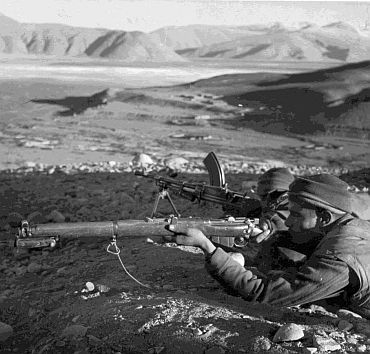




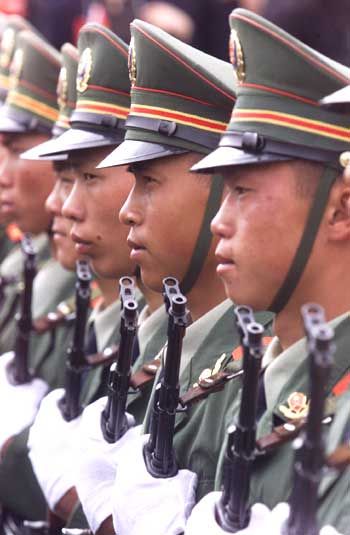

article